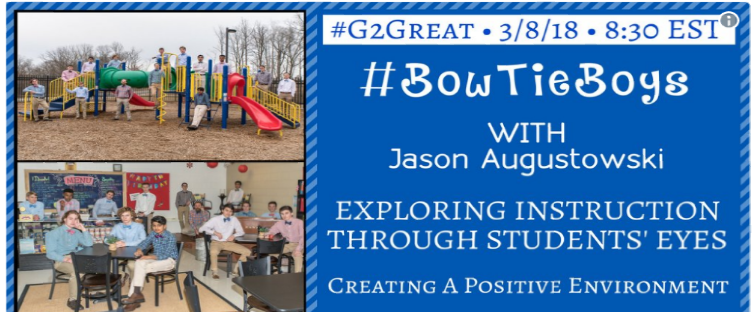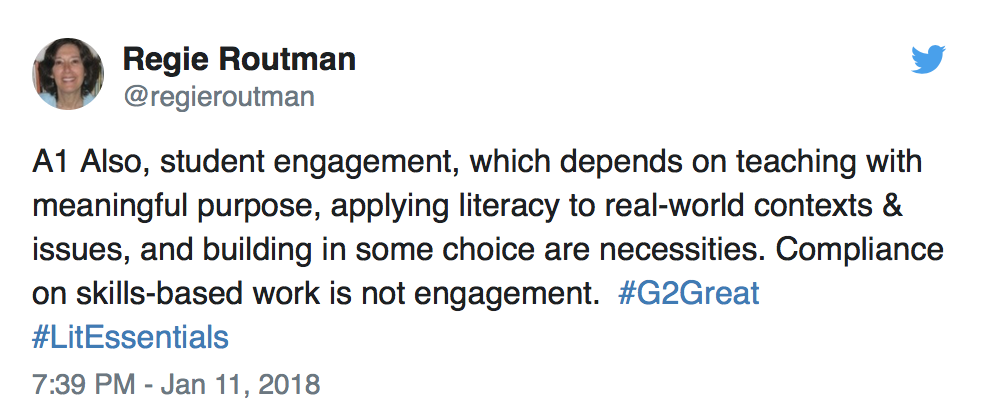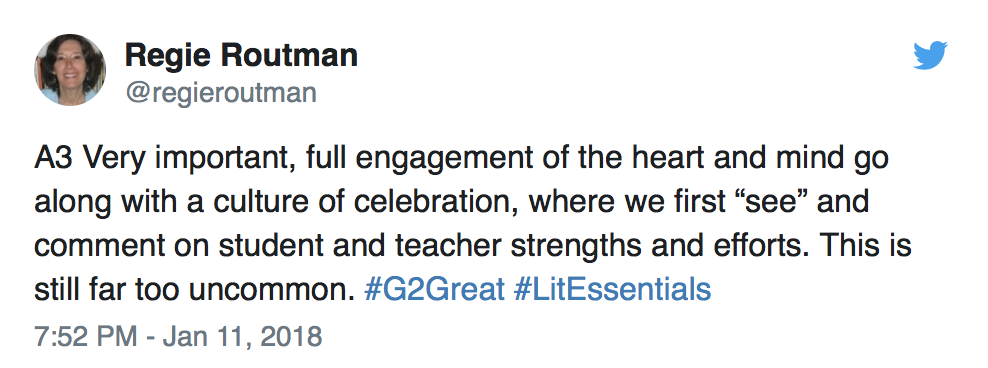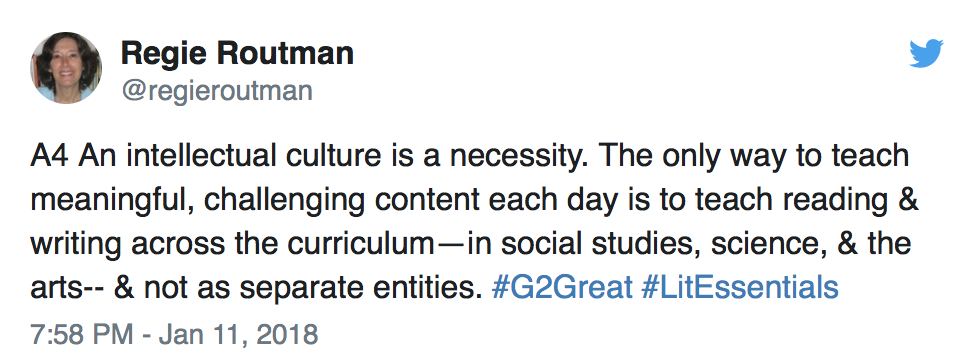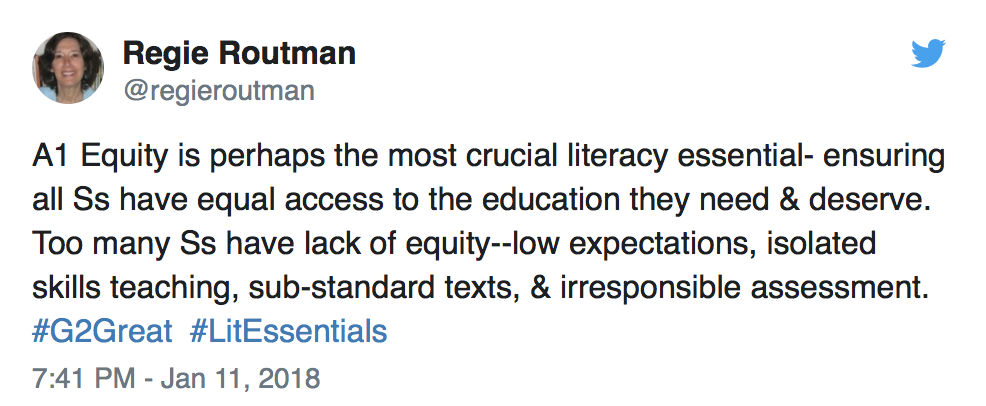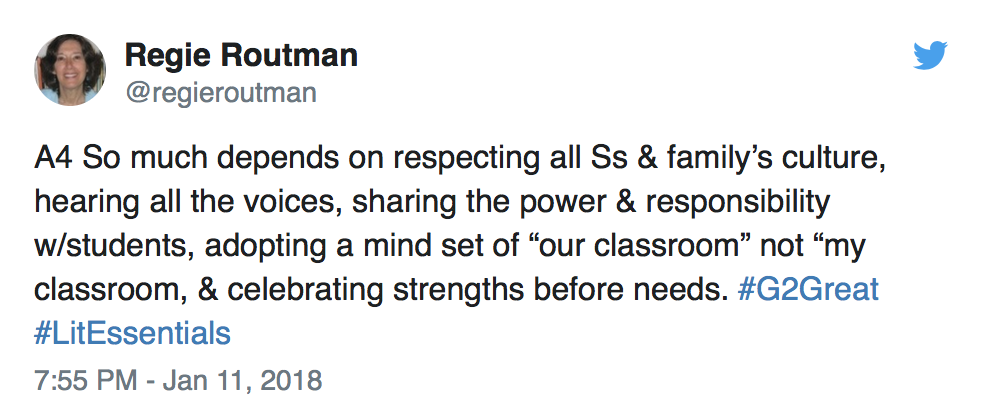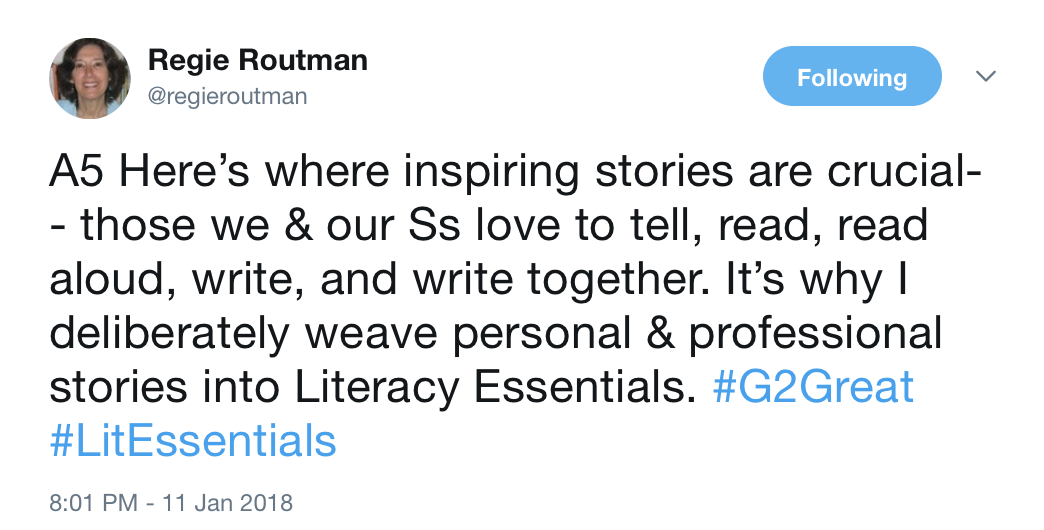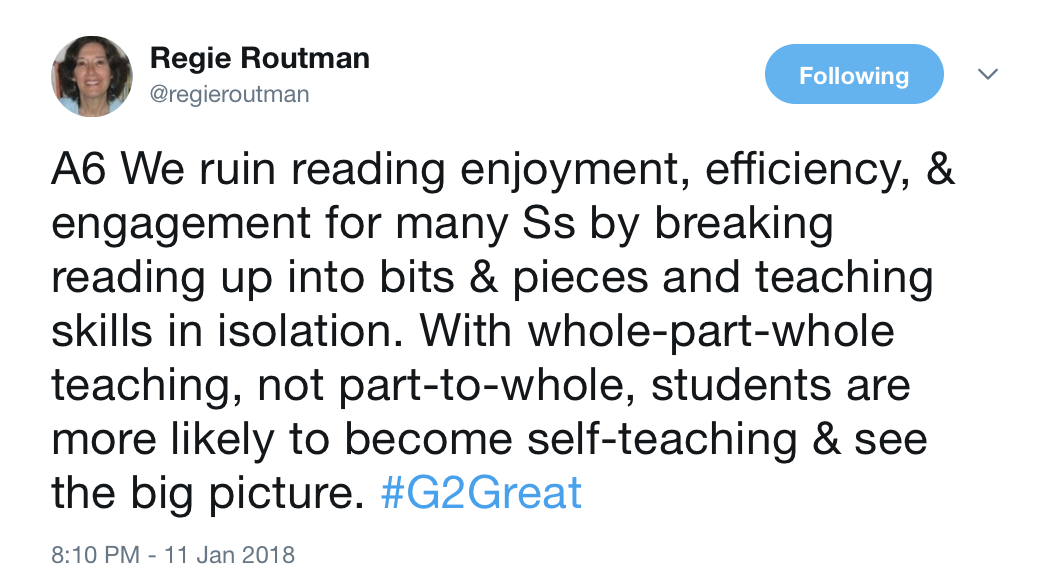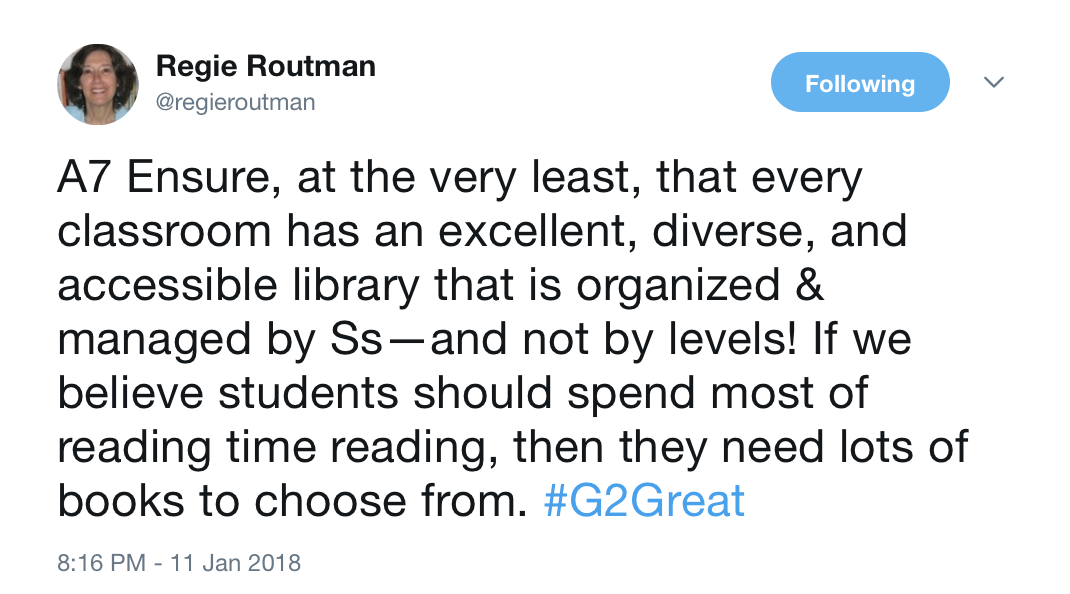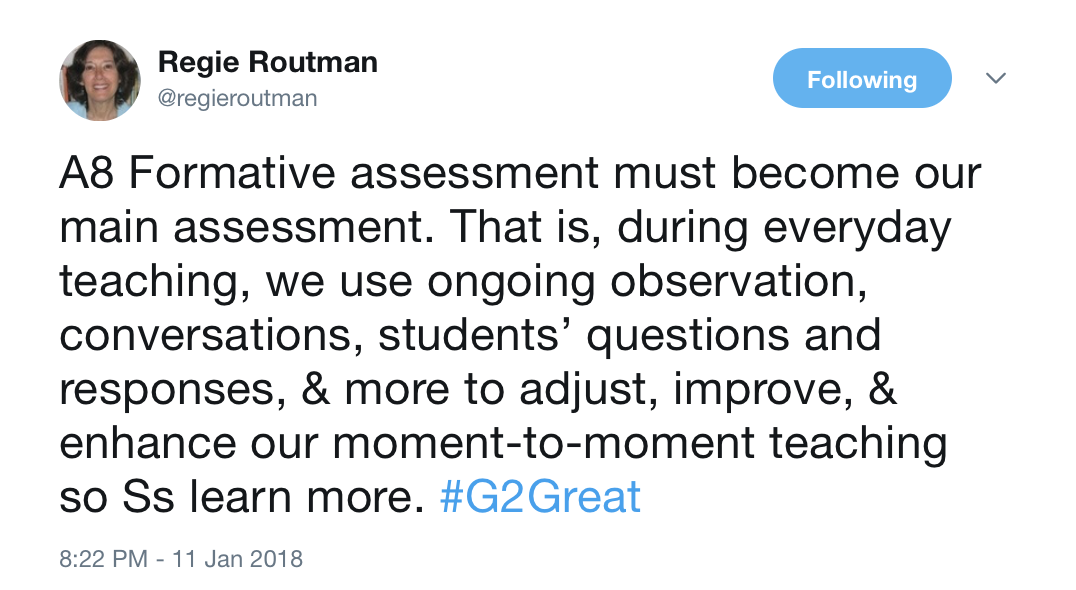By Fran McVeigh
There was an air of excitement and electricity that led up to the #G2Great chat with the #BowTieBoys on March 8th. The boys, ranging from 7th graders to 11th graders, craft their own questions, greet folks to the chat and carry on conversations as veterans. I’ve been lucky to “know” the #BowTieBoys for three years but I didn’t fully understand their depth of knowledge and commitment to improving education until #NCTE17. In St. Louis, I saw them individually and as groups multiple times across the days, as they were quite literally the first people I saw at the conference hotel and in four sessions over the course of the conference.
What is their story?
The #BowTieBoys are some very gifted literate secondary students who have literally banded together to study how education could be improved. Their future plans and interests are as varied as they are. Meeting their parents at some of the sessions added another dimension to my understanding. What if students were encouraged to study the work of some of the best and brightest? And who would that be? They were on panels and in pictures with Lester Laminack, Linda Rief, Dr. Mary Howard, Penny Kittle, Kelly Gallagher, Kylene Beers and Bob Probst. They read and study professional education texts. Who wouldn’t grow and learn from those #Edu-heroes?
What are the Keys to Creating a Positive Environment?
1. Relationships and Respect
Relationships and respect are so intertwined that it is difficult to have one without the other. As a teacher, it’s important to build relationships from day one in the classroom. That might be the conversations in the hall about the school event the night before, at the door about individual scores and expertise, or in the classroom pulling in specific student interests to engage the students in the learning. Respect is not about assuming it will be bestowed on teachers as a point of privilege. True respect is about caring for students and being able to be human when students do need a bit of extra care, or being able to laugh and joke as teachers and students learn from each other. Respect is a two-way street and students will earn teacher respect and trust as they also work on developing relationships and treating others kindly. Students have strengths that they can use to teach others in the class, perhaps in the area of digital tools but also in those areas of personal interest where they spend time every day.
As Sam Fremin said,
“EVERYONE in the learning community is a learner AND a teacher.”
- Transparency
Transparency is often found in communication that builds on the relationships formed under mutual respect. Secondary students also prefer to have their voices heard as well as to have choices in their daily work. Teachers that can admit mistakes and move on not only exemplify transparency but they also model how to continue to grow and persevere in the face of difficulties. Transparency is necessary for a growth mindset for students and teachers.
Other areas of transparency include: setting time frames for assignments together, having high expectations for all students and developing the assessment/evaluation criteria together. In a transparent environment, everyone is a learner and everyone makes positive growth. Above all, transparency assumes an openness and an atmosphere of honesty from both teachers and students that builds upon the respect previously mentioned and often includes asking for feedback from students and then acting on that feedback.

- Strategies to Engage ALL Learners
Several strategies were mentioned during the chat including: time, transparency, and trust. Time included allocating enough time so students can work with their peers. Time to explore topics that students are interested in. Time to work on projects for creation or even problem solving. In addition to transparency qualities previously mentioned, allowing choice of assignments and opportunities to pursue tasks that allow quiet participation for students who prefer to work alone is important. Variations in groupings for work will And with trust, strategies that allow a voice in how the task will be evaluated, perhaps the co-creation of rubrics or the negotiation of due dates, are preferred. Trust can also be built as a part of those teacher-student relationships when teachers attend the co-curricular activities of their students.

- Low Student Stress Levels
In the classroom, stress can be reduced by ensuring that time is allocated so that students always begin projects or homework in class, ask questions, and clarify that they know what the learner outcomes are. Students appreciate teachers who chunk projects into smaller shorter deadlines that enable students to have frequent check in points. Feedback along the way in bigger projects or tasks also allows students to know what they can do to improve learning. Simple conversations with students in terms of whether time frames seem reasonable, how can stress be reduced and how does this fit with other course requirements. Similarly teachers who communicate with others can be aware in advance of due dates and not have three or four major projects all due on the same date. Stress is a real issue. Learning does not occur and students cannot thrive when a learner is under stress. That also means that tasks and projects should be valuable to students and teachers and not perceived as busy work.

- Reasonable Grading Timelines
What are reasonable timelines for grading? If a task is assigned to be done in one day in one class period, how much time should the teacher have to grade that task? A typical “It depends” answer may prevail because if this is during class periods 4, 5, 6, 7, and 8 and the teacher’s prep period was period 2, the grades will probably not be posted that day. But is it fair for students if two or three days pass and those grades are still not posted? Grades are an interesting school phenomenon. Grades are after the fact and they close the door to learning. Yes, it would be nice if more focus was on learning and less on grading, but timeliness of grades is an issue that perhaps again relates back to transparency, relationships, and respect.

- Cell Phone Usage
Should cellphones be used in classrooms? Again the answer might be, “it depends.” If students in the building have 1:1 devices, the need for cell phones may be reduced. Sometimes cell phones might be more efficient uses of technology and/or feedback for students and teachers. The learning needs should drive cell phone usage rather than the need to have a fun, cute activity. This again, could be a source of both transparency and trust if students approach a teacher outside of class time with a new app or extension that would really make learning simpler in that classroom. Showing, explaining, and providing a rationale in a separate setting would also be respectful of student, teacher and class time. It is important for teachers to be consistent in their messages about how, when, and where cell phones can be used. But if that is not a skill taught at school, where will it be taught? How and when will students learn to manage the distractible portions of cell phone usage?

- Student Involvement in Assessment and
Grading
Another feature of a positive classroom environment is student involvement in assessment and grading. This varies from classroom to classroom much to the dismay of students who may see this inconsistency as a lack of transparency. One way to involve students is to have student conferences. Recording the conferences on Flipgrid and sharing with parents would also be an increase in transparency. Students who help develop the rubrics that are used for assessments would also see this as a characteristic of a positive classroom environment. Teachers who routinely complete the “tests” themselves to check for accuracy and necessity are also respectful of their students and their precious learning time.

- Safe and Comfortable Classrooms
How do your classrooms look? Are they inviting? Are they comfortable? Some considerations include furniture that matches the needs of the students and the various instructional groupings: space and tables to collaborate in teams, quiet spaces for reading or writing, as well as space for partner work. That might determine the need for tables instead of desks, couches instead of chairs, and a nook or two where students can seek solitude. Flexibility that responds to the needs of the students is important.
As you have read, you noticed the eight components the #BowTieBoys identified for a positive classroom environment were: Relationships and Respect, Transparency, Strategies to Engage ALL Learners, Low Student Stress Levels, Reasonable Grading Timelines, Cell Phone Usage, Student Involvement in Assessment and Grading, and Safe and Comfortable Classrooms. Others exist but these eight could generate great conversations.
Have you checked in with your students lately about your classroom environments?
What would your students say are the keys to creating a positive classroom environment?
Additional Resources:
Storify from March 8, 2018 chat: https://storify.com/DrMaryHoward/g2great-3-8-18
#BowTieBoys Blogs: thebowtieboys.blogspot.com
4 minute video from 3/9/18 after #G2Great chat: Link
#BowTieBoys YouTube Channel: Link
Previously on Literacy Lenses:
A Reflection on #NCTE17 with the BowTieBoys – Exploring Choice from Students’ Eyes
BowTieBoys -Exploring Instruction Through Our Students’ Eyes
JV BowTieBoys – Exploring Instruction Through Our Students’ Eyes
Sam Fremin: Viewing Instruction Through a Student’s Eyes (storify)
